General description of the cashew tree
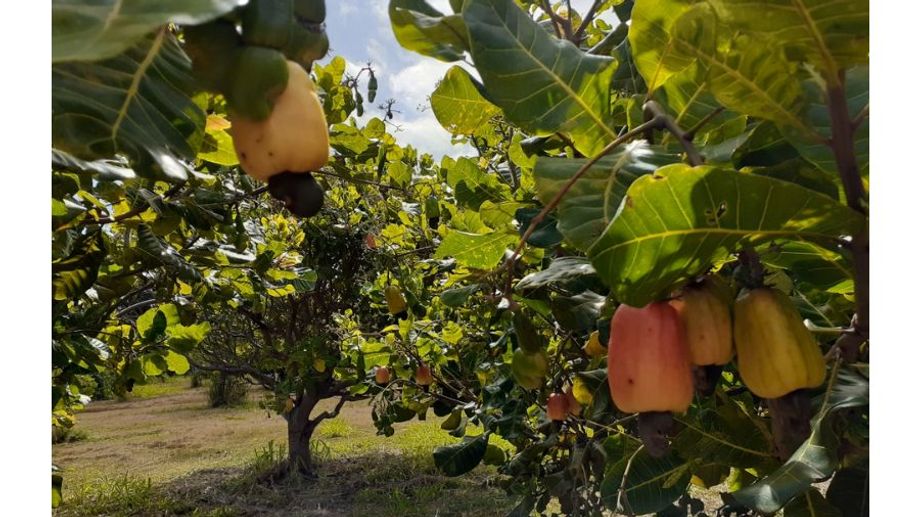
Mục lục
General description of cashew trees
Cashew trees (scientific name: Anacardium occidentale) are a tree with high economic value, often grown in the Central Highlands and Southeast regions of Vietnam. Here is some general information about cashew trees:
Origin and history:
Cashew trees originate from Northeast Brazil.
This tree belongs to the mango family and is widely grown in tropical countries.
Since 2006, Vietnam has become one of the countries with the third-largest cashew growing area and export output in the world.
Characteristics of cashew trees:
Cashew trees have short trunks, from 3m to 9m high.
The canopy will grow both horizontally and vertically, shaped like an umbrella.
The flowers are small, fragrant and white.
When mature, large branches grow horizontally, and small branches grow downward to the ground.
Yield and lifespan:
Cashew trees have an average lifespan of 40 to 50 years.
Stable productivity usually begins in year 10.
Origin and history:
Cashew trees originate from Northeast Brazil.
This tree belongs to the mango family and is widely grown in tropical countries.
Since 2006, Vietnam has become one of the countries with the third-largest cashew growing area and export output in the world.
Characteristics of cashew trees:
Cashew trees have short trunks, from 3m to 9m high.
The canopy will grow both horizontally and vertically, shaped like an umbrella.
The flowers are small, fragrant and white.
When mature, large branches grow horizontally, and small branches grow downward to the ground.
Yield and lifespan:
Cashew trees have an average lifespan of 40 to 50 years.
Stable productivity usually begins in year 10.
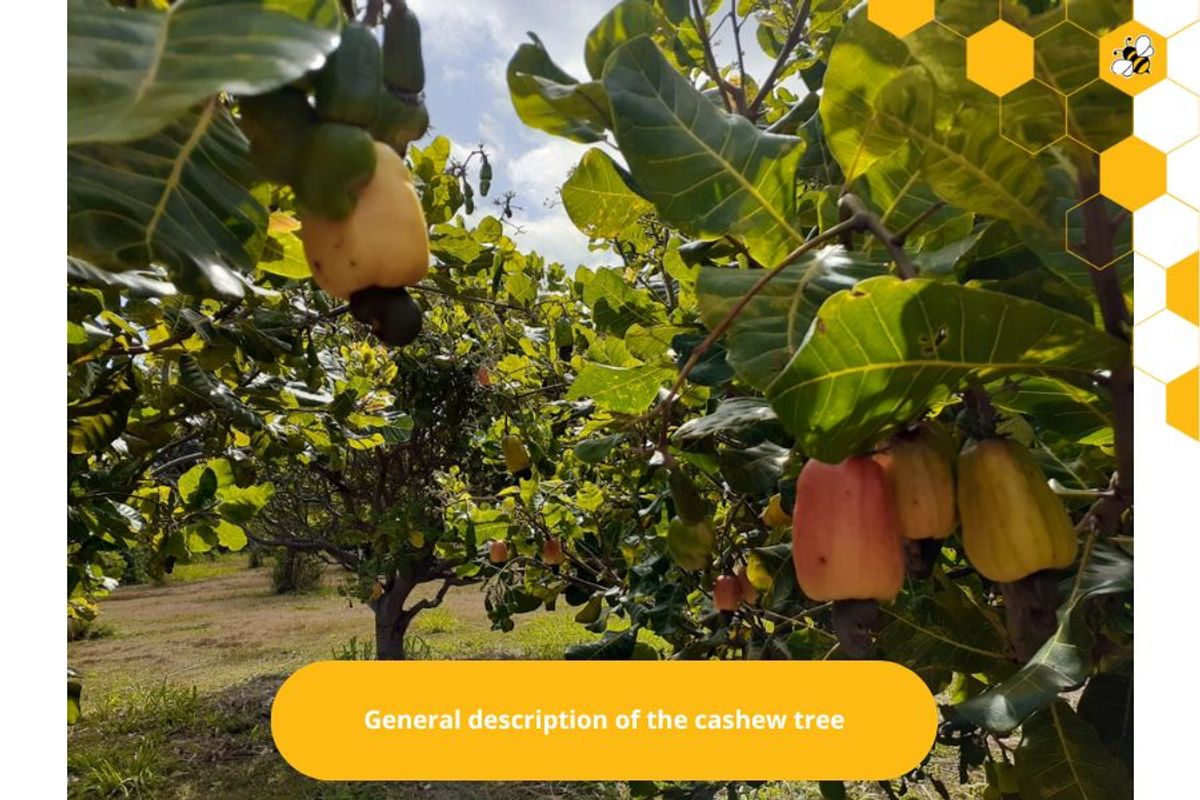
In short, the cashew tree is not only a perennial industrial tree but also a unique fruit that can be used in both hot and cold seasons. Cashew fruit is also considered by many to have a more fragrant smell than almonds.
Cashew tree trunk
Because it is a perennial industrial tree, the cashew tree trunk is usually about 6 to 8m high. If it lives in good growing conditions, the tree can grow up to more than 10m high (in good growing conditions, if it encounters other harsh environments, the tree will be stunted and cannot grow as expected).
There is often a lot of latex in the trunk and branches of the cashew tree. The tree canopy is often umbrella-shaped, and the branches often grow horizontally, so when they are young, the branches often grow down to the ground. Cashew trees are light-loving plants, so the tree trunk can grow and develop well in places with strong light. When in full light conditions, the branches can spread out, so farmers need to pay attention in the pruning stage to create a canopy and must plant trees at the appropriate density to help increase the branch's ability to spread out.
There is often a lot of latex in the trunk and branches of the cashew tree. The tree canopy is often umbrella-shaped, and the branches often grow horizontally, so when they are young, the branches often grow down to the ground. Cashew trees are light-loving plants, so the tree trunk can grow and develop well in places with strong light. When in full light conditions, the branches can spread out, so farmers need to pay attention in the pruning stage to create a canopy and must plant trees at the appropriate density to help increase the branch's ability to spread out.
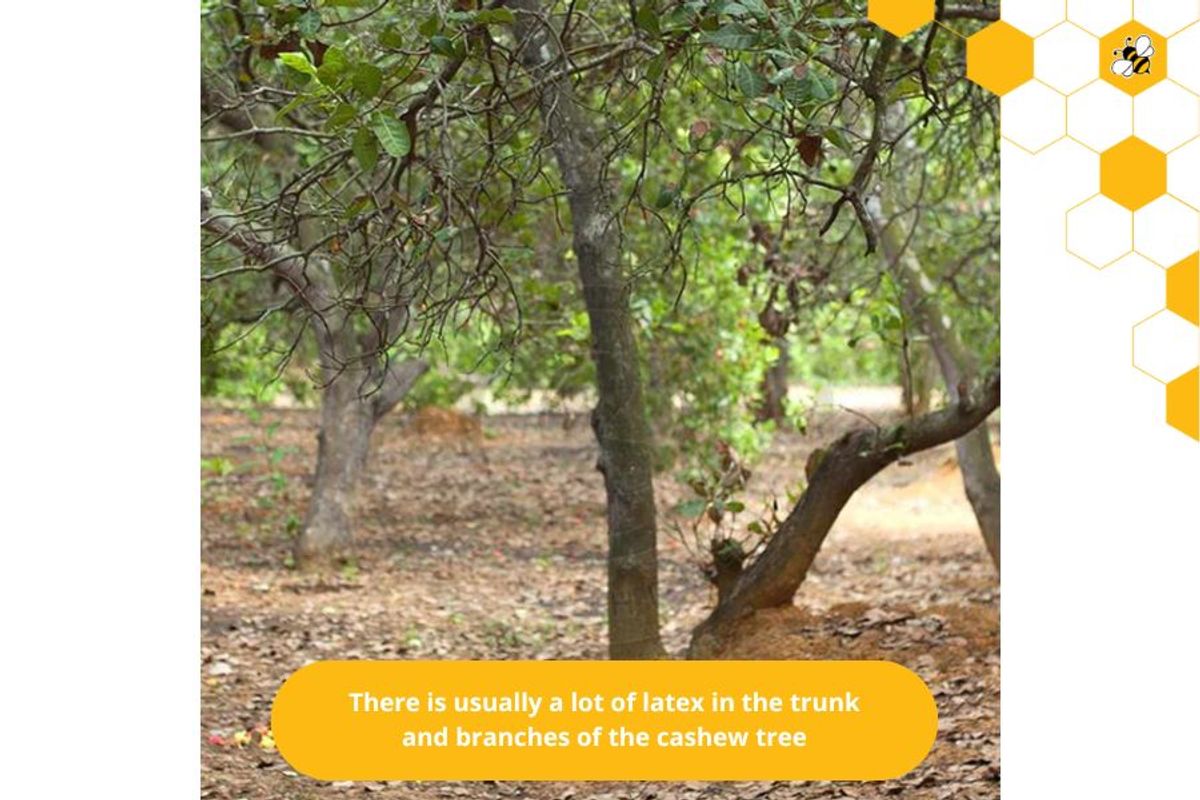
Cashew roots
Cashew trees are taproot trees, growing horizontally, the roots of the tree grow far and strong to find nutrients, and the roots of cashew trees can penetrate deep into the soil. When planted in loose soil, after only about 2 to 3 months, the cashew roots can penetrate deep into the soil up to 80 cm, after about 5 to 6 months, the cashew roots can penetrate deep into the soil up to 2 meters. Depending on the type of soil and the growth ability of the cashew tree, the roots of the cashew tree can penetrate tens of meters deep into the soil, the cashew roots are very strong, firmly attached to the soil, and can reach about 1 to 3 meters from the ground down. In addition, there are documents recording that if they are grown in suitable soil, the tree can penetrate deep into the ground up to nearly 100m, and can spread out to cover the canopy from 60 to 100cm, so the tree can withstand drought extremely well, cashew trees can grow normally even in the dry season, without water for about 5 to 6 months.
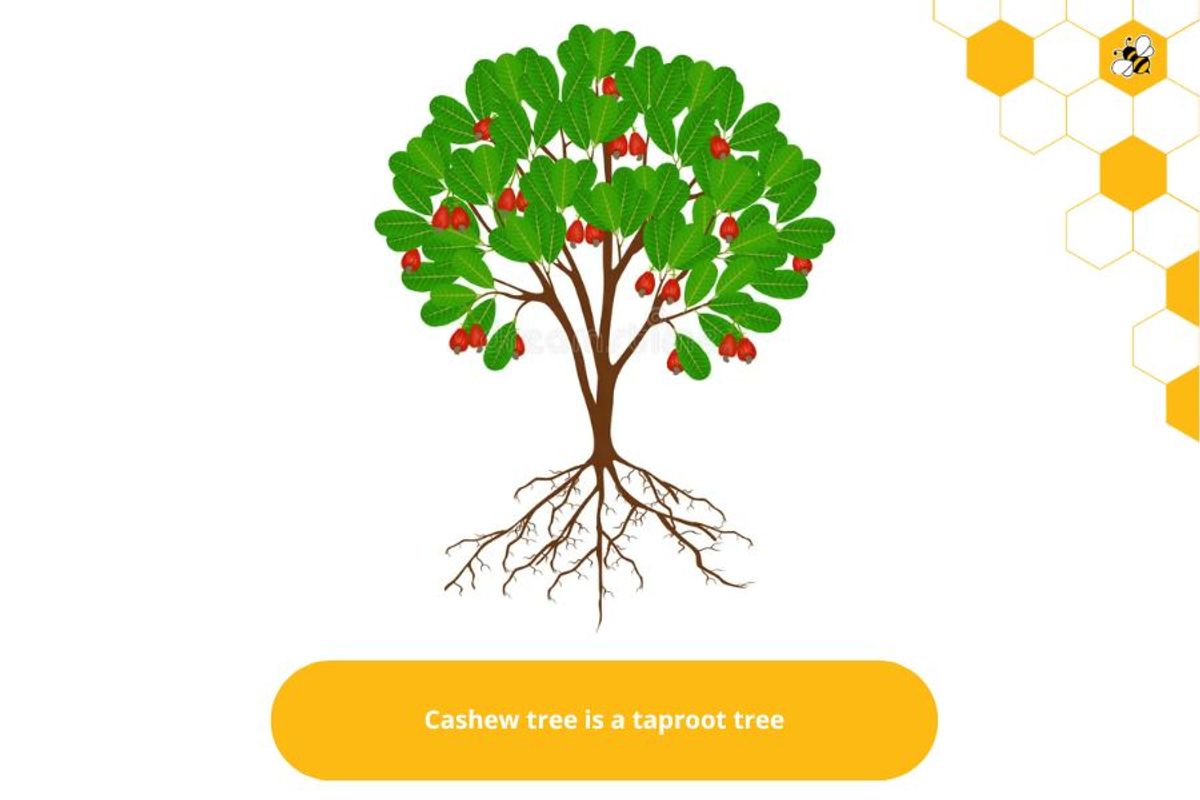
Cashew leaves
Cashew trees have leaves that are often concentrated at the top of the branches, with short petioles, and leaves that are 10 - 20 cm long and 5 - 10 cm wide. The leaf blades of cashew leaves are quite thick with prominent veins, especially on the underside of the leaves with prominent veins. When the cashew leaves are young, they are often red or slightly light green, when they are old, they will turn dark green, when the leaves change, the cashew leaves will gradually turn yellow and finally wither and fall to the ground.
The canopy of the cashew tree is usually very wide, under favorable growing conditions when the tree is mature and fully developed, the canopy of the tree can be up to 5m wide from the base, usually a mature cashew tree when it is 6 to 7 years old will often have a canopy that covers an area of up to 50 to 60 square meters.
The canopy of the cashew tree is usually very wide, under favorable growing conditions when the tree is mature and fully developed, the canopy of the tree can be up to 5m wide from the base, usually a mature cashew tree when it is 6 to 7 years old will often have a canopy that covers an area of up to 50 to 60 square meters.
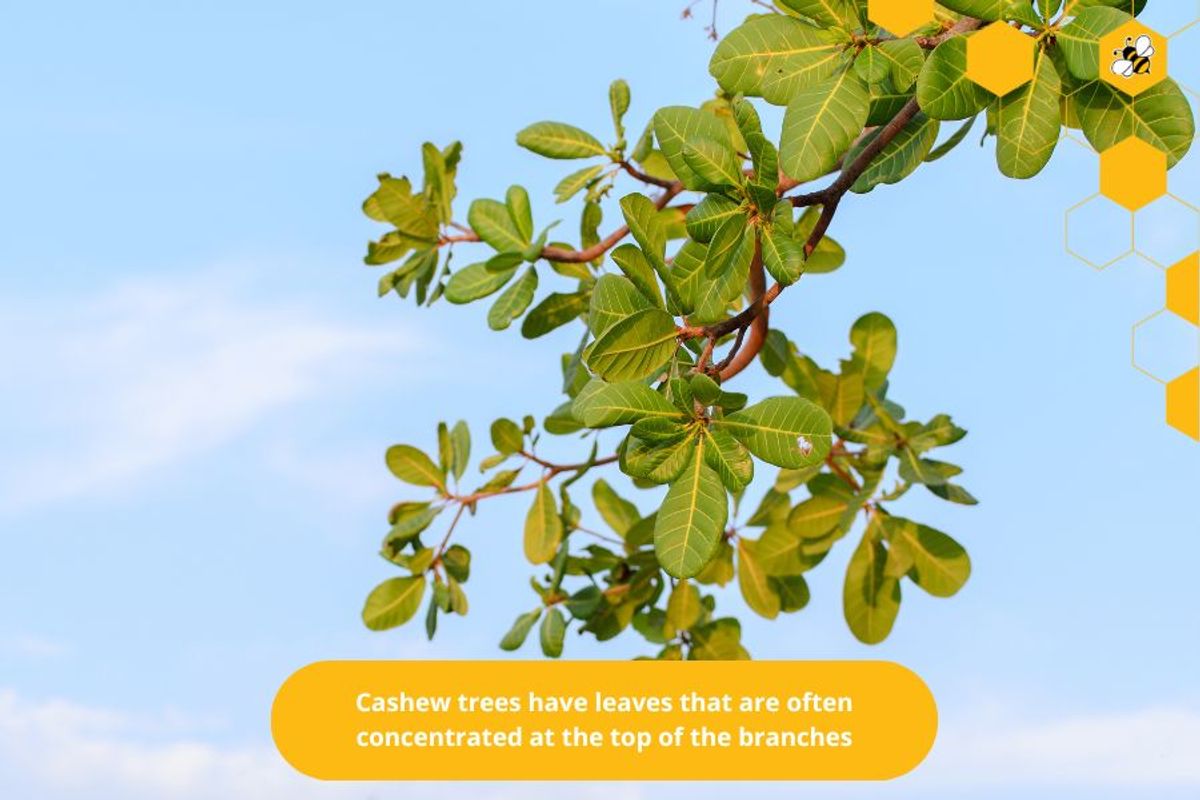
Cashew flowers
Cashew trees usually bloom when the rainy season ends and the dry season begins. Cashew flowers include both bisexual and unisexual flowers. Cashew flowers grow in clusters, each cluster has from a few dozen to hundreds of thousands of flowers. Cashew flowers are yellow or white with red stripes, sometimes the flowers are beautiful pink. Cashew flowers have 5 petals, male flowers only have male stamens, while bisexual flowers have 8 to 10 male stamens and 1 female pistil. Normally, only 1 male stamen in a bisexual flower can fully develop its functions and release pollen, the other stamens usually cannot pollinate.
Cashew flowers usually only grow at the top of the branch and include both male and bisexual flowers. Cashew flowers are usually only pollinated by insects or wind. Flowers usually bloom in the morning, however, if it rains while the cashew flowers are blooming, the anthers of the flowers will not be able to crack open to let the pollen fall inside, so the pollination process will not be able to occur, causing a crop failure.
The cashew tree will only start to bloom after 3 years of planting, the flowering period will usually last about 3 months and is divided into 3 distinct stages:
The time when the first male flower blooms will usually last from about 2 to 4 days, at this time there will be about 19 - 100% male flowers blooming.
The time when both hermaphrodite and male flowers bloom usually lasts about 70 days. Of which, about 0 to 60% are male flowers blooming, and the remaining about 0 to 20% are hermaphrodite flowers blooming.
The time when the second male flower blooms usually only lasts 13 days, with about 0 to 67% of male flowers blooming.
Thus, the blooming time of bisexual flowers and male flowers often differs by 1/6, so the flower cluster often has many flowers but the fruit set rate is only about 10.2%.
Cashew flowers usually only grow at the top of the branch and include both male and bisexual flowers. Cashew flowers are usually only pollinated by insects or wind. Flowers usually bloom in the morning, however, if it rains while the cashew flowers are blooming, the anthers of the flowers will not be able to crack open to let the pollen fall inside, so the pollination process will not be able to occur, causing a crop failure.
The cashew tree will only start to bloom after 3 years of planting, the flowering period will usually last about 3 months and is divided into 3 distinct stages:
The time when the first male flower blooms will usually last from about 2 to 4 days, at this time there will be about 19 - 100% male flowers blooming.
The time when both hermaphrodite and male flowers bloom usually lasts about 70 days. Of which, about 0 to 60% are male flowers blooming, and the remaining about 0 to 20% are hermaphrodite flowers blooming.
The time when the second male flower blooms usually only lasts 13 days, with about 0 to 67% of male flowers blooming.
Thus, the blooming time of bisexual flowers and male flowers often differs by 1/6, so the flower cluster often has many flowers but the fruit set rate is only about 10.2%.
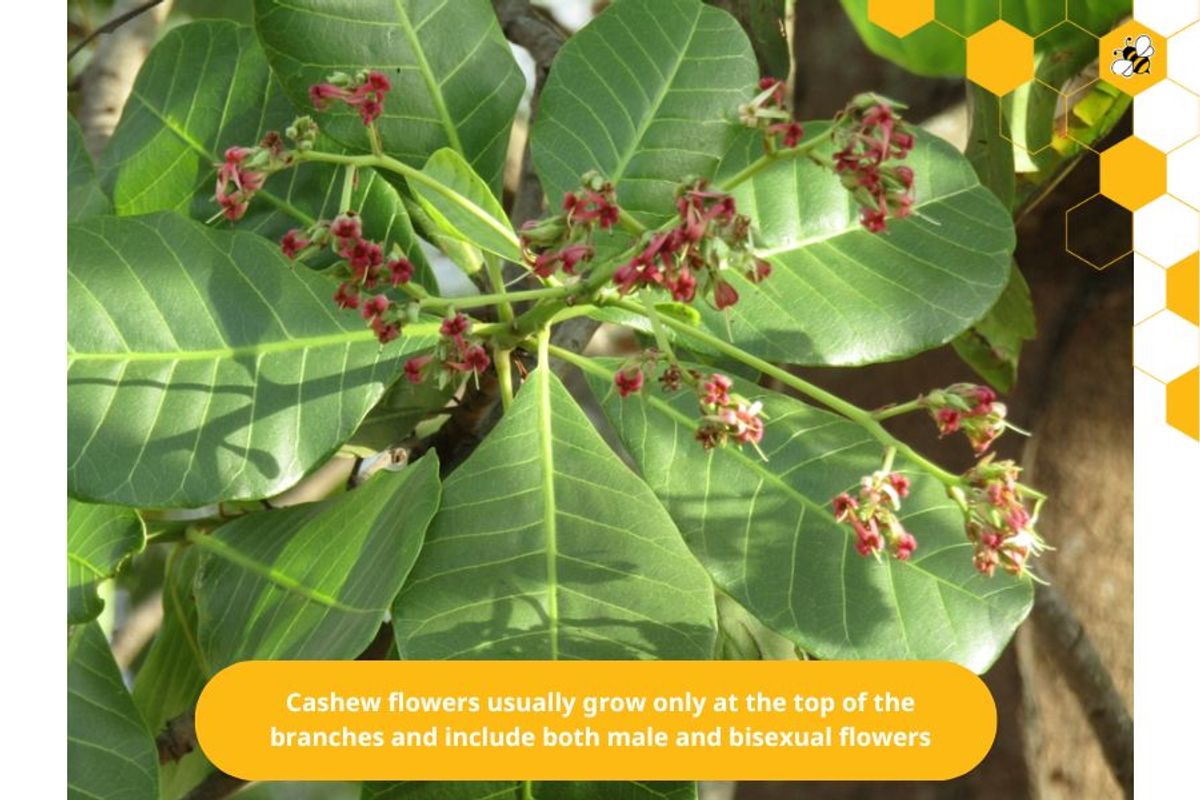
Cashew fruit
Cashew fruit (false fruit) is also known as upside-down peach because the cashew fruit is just a false fruit with a swollen stem. The real cashew fruit is the cashew nut that we use after separating the kernel. After successful pollination, the real fruit of the cashew fruit (cashew nut) will grow very quickly in size. Within about 1.5 months, it is likely to reach its maximum size. From there, the fruit will no longer begin to grow but will instead swell the stem to form a false fruit. Thus, the cashew fruit usually has two parts: the real fruit and the false fruit. The false fruit usually accounts for a very large weight, up to 90% because the swollen stem is pear-shaped. When ripe, the cashew fruit is often pink or yellow, the weight of the false fruit is usually from 45 to 60g. Yellow cashew fruit is usually larger and has a higher sugar content than red cashew. The real fruit (seed) usually only accounts for 10% of the fruit weight. Cashew nuts will have the shape of a large bean, the outer shell when fresh is usually gray-green and after drying it will turn brown. Cashew nuts are usually smooth and weigh from 3-5g per nut.
To get the cashew kernel, farmers need to remove the shell (this shell usually accounts for 70% of the weight of the nut and has a shell up to 3mm thick), the shell is divided into 4 parts to cover the kernel. The outermost is the very tough and hard outer shell, followed by the middle shell which is quite porous, the middle shell usually accounts for 30% of the shell weight, this is the part that contains the oil of the cashew nut. To get the cashew kernel, we need to remove this shell but it contains Urushion which is very toxic to human skin. Finally, the inner shell is very hard, and then the thin silk shell outside covers the white cashew kernel.
Cashew nuts contain a lot of oil and fat, have a delicious flavor, and are rich and fatty, so they are widely used in the processing of confectionery products or roasted to eat (salted roasted cashews).
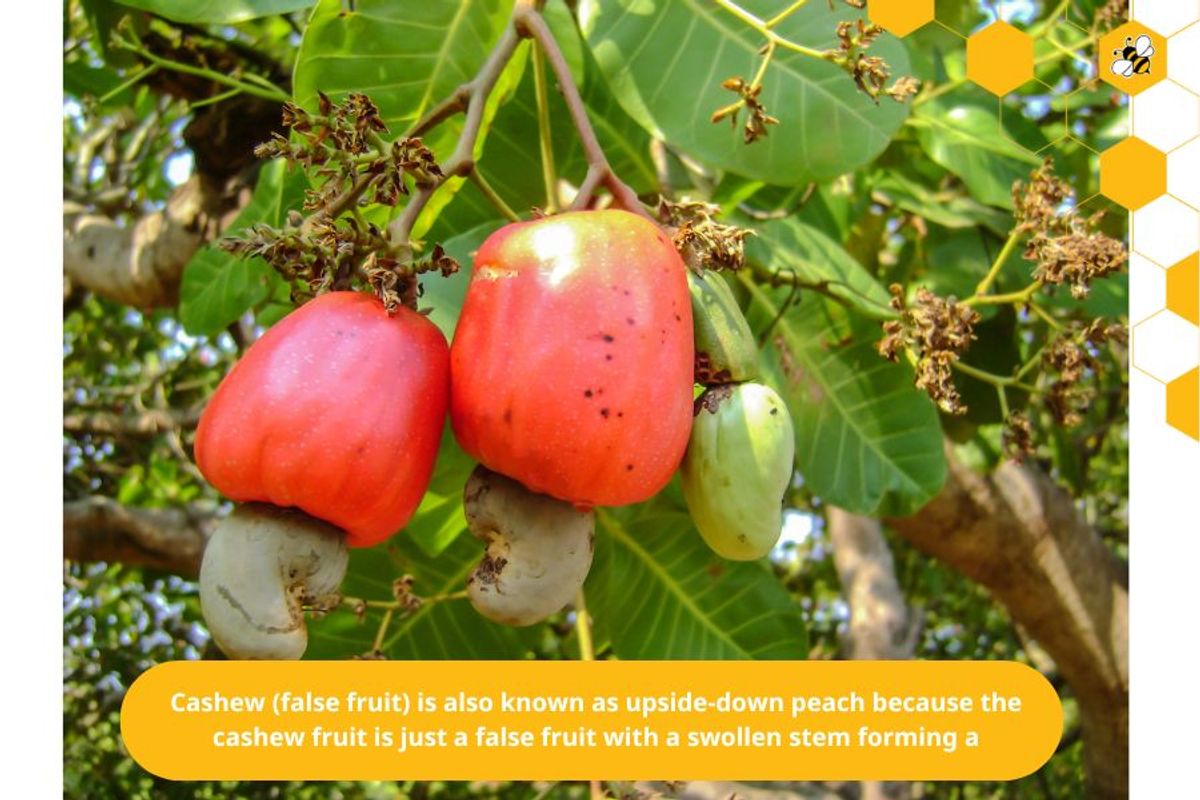
Cashews nut
Fresh cashews are cashews that have just been plucked from the cashew fruit, without any processing. Fresh cashews have an eye-catching bright color and the cashew stalks still retain their freshness from the branches. Fresh cashews are usually heavier than dried cashews and must be dried many times in the sun to become dried cashews - the basic ingredient for processing factories.
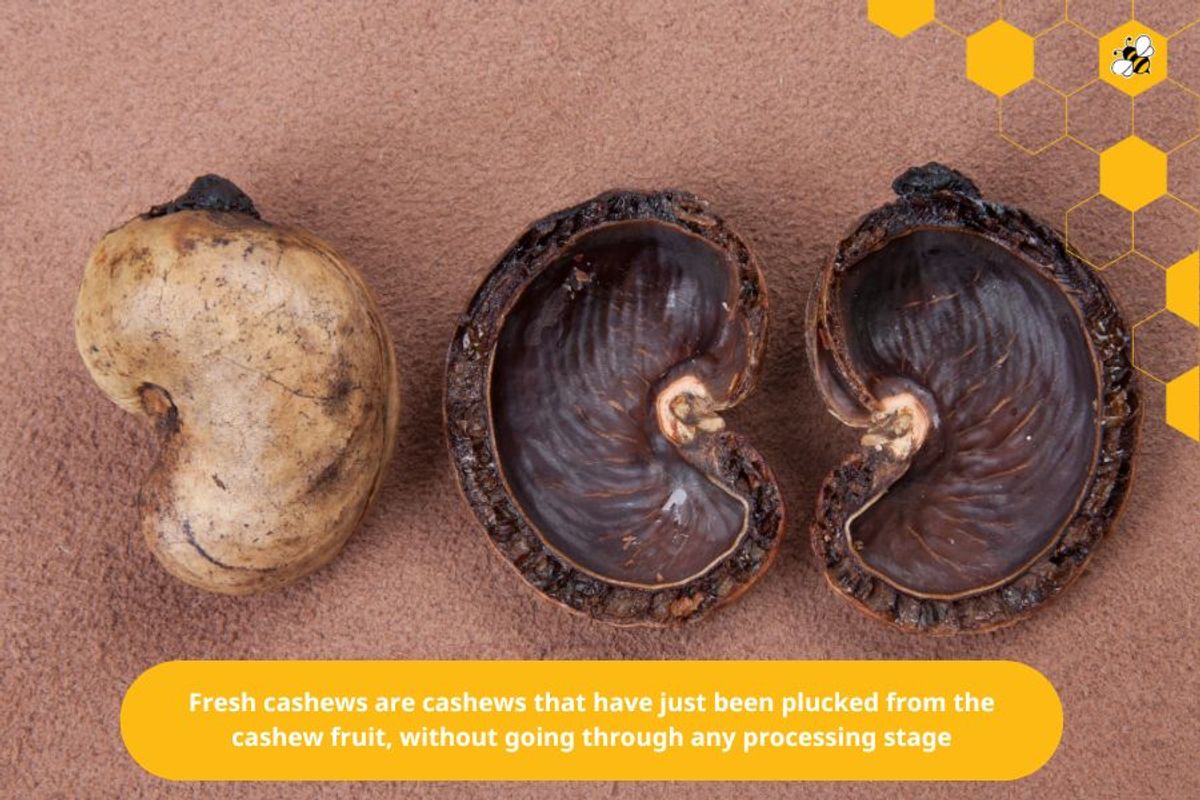
Summary
The above is all the basic information about the origin of the cashew tree and the effects of cashew nuts on the body. Cashew nuts have many very good effects on health. This is a dish that should be included in family meals every day. Advice from nutrition experts is to use about a small handful of cashew nuts per day (equivalent to 30 grams) is best. However, many people also wonder where to buy the best cashew nuts. Through nutritional testing, Binh Phuoc cashew nuts are considered the best.